Disclosure: This post may contain affiliate links. I earn a small commission of product sales to keep this website going.
It’s easy to get lost down all the rabbit holes when looking at mirrorless camera comparisons. Each brand will overwhelm you with confusing technical language and numbers, leading you to believe that each one is “the best.” But which brand truly does have “the best” mirrorless camera?
That’s a very subjective question and we’re going to look at how to answer it by analyzing what kind of photographer you want to be.
So let’s take a look at the bigger picture, comparing mirrorless cameras based on which photographers and which jobs each brand is suited for.
And all of these mirrorless cameras have great image quality, so you’re not going to see “image quality” or other generic things like that in the “strengths.” I’ll try to be more specific than that.
Related:
- Advantages of Mirrorless Cameras
- Disadvantages of Mirrorless Cameras
- Full-Frame vs APS-C Sensors: Does it Matter?
Mirrorless Camera Comparison Chart
Here’s a summary of all of the information below in table form.
| Sensor Format | Strengths | Weaknesses | Ideal Jobs | Price Range | Most Popular | |
|---|---|---|---|---|---|---|
| Sony | APS-C & Full Frame | Autofocus system, processing speed, lenses | Interface | Sports, portraits, casual & professional travel | $450-$4,500 | a7 III, a6500 |
| Fujifilm | APS-C & Medium Format | Film simulations, user interface, great native lenses | Doesn't play nice with all processing programs, not a lot of third-party lenses | Street & documentary, travel | $450-$10,000 | X-T3, X-T30 |
| Olympus | Micro Four-Thirds | Small size, accurate colors, great optics | Small size, low-light capability, harder to get shallow DoF | Photojournalism, casual photography | $350-$2,600 | OM-D E-M1 Mark III, OM-D E-M5 Mark III |
| Panasonic | Micro Four-Thirds | Video capabilities, image stabilization, battery life | Low-light performance, controls not intuitive | Professional video, vlogging | $500-$4,000 | Lumix DC-GH5, Lumix DC-S1H |
| Canon | APS-C & Full Frame | Accurate colors, build quality, maintains full EF lens capabilities with adapter | Control interface will be odd for DSLR owners, only one card slot | Canon DSLR owners who want to try mirrorless | $300-$2,500 | EOS R, EOS M50 |
| Nikon | APS-C & Full Frame | Easy for Nikon DSLR shooters to transition, built-in stabilization | Single card slot, battery performance | Nikon DSLR owners who want to try mirrorless | $850-$2,800 | Z 6, Z 50 |
| Leica | APS-C, Full Frame, Medium Format | Solid build, great optics | High entry price, steep learning curve, mediocre video | Documentary, travel, and street photographers | $2,500-$20,000 | M10, CL |
Sony mirrorless cameras
- SENSOR FORMATS: APS-C & Full Frame
- STRENGTHS: Probably the best autofocus system on the market, processing speed, amazing lens selection
- WEAKNESSES: Menu system & user interface has long frustrated photographers
- IDEAL JOBS: Sports/action photographers, portrait photographers, casual & professional travelers
- PRICE RANGE: $450 – $4,500
- MOST POPULAR: a7 III (full frame), a6500 (APS-C)
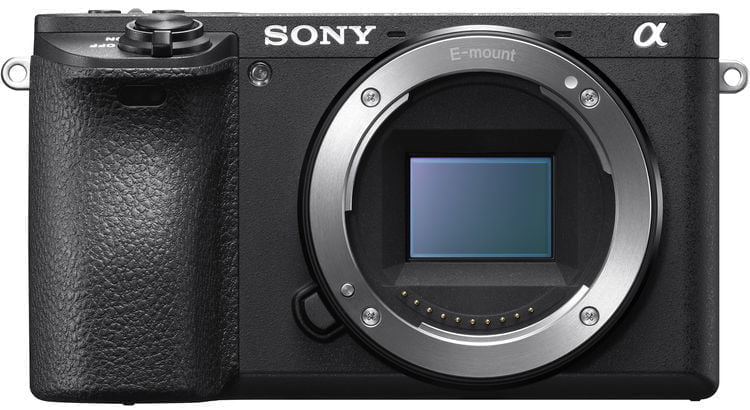
Sony really made mirrorless cameras popular with their a6000 and a7 back in 2014, and they continue to sell the most popular mirrorless cameras on the market.
The line of Sony mirrorless cameras has expanded since then, and they produce a range of mirrorless cameras for various types of photographers.
- The latest model in the a6000 line is a favorite for travel photographers and casual shooters. This is Sony’s only line of APS-C sensor cameras, the rest are full-frame.
- The a7 line, the “Swiss Army Knife” of Sony full-frame mirrorless cameras, is up to the a7 III now and has spawned both the a7R and a7S.
- The a7R is a high-megapixel full-frame camera catering to photographers who need high megapixel counts for large prints or heavy cropping. You’ll need the highest-quality lenses to get the full potential out of this sensor. The current a7R IV sensor is 61MP.
- The a7S line has the same body as the a7 but houses a specialty low-light full-frame sensor. The sensor is only 12MP, but the larger pixel size gives them amazing capability in dark scenes, as well as awesome dynamic range during video shooting.
- And finally, there’s the newer a9 line, a high-end 24MP camera with the best autofocus, burst speed, and processing on the market. This nearly $4,500 camera is an amazing tool in the hands of sports & commercial photographers.

Sony cameras are known for their amazing tech and focus capabilities. Their lenses are pretty good too. The only downside of this is that the cameras have a tendency to feel fragile in the hands of photographers in rugged environments, and their lenses don’t have great dust sealing. They’ve also been struggling with coming up with a user-friendly interface for years, which adds unnecessary complexity for many photographers.
For details about their camera lineup, read my Sony mirrorless camera comparison.
Fujifilm mirrorless cameras
- SENSOR FORMATS: APS-C & Medium Format
- STRENGTHS: Film simulations, user interface, great native lenses
- WEAKNESSES: Different sensor can’t be read by all processing programs, not a lot of third-party lenses available
- IDEAL JOBS: Street photography, documentary & travel photographers
- PRICE RANGE: $450 – $10,000
- MOST POPULAR: X-T3, X-T30
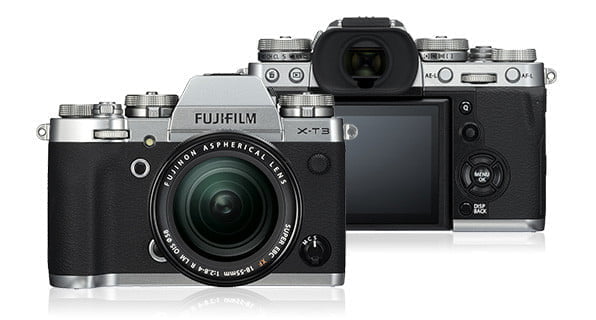
Fujifilm has a unique approach in that they’re focusing on different lines of APS-C cameras, skipping full-frame, and then offering a fantastic line of professional medium-format cameras. They’re also the only film manufacturer that has this much of a stake in the digital camera market.
Part of Fujifilm’s success owes to this powerful film heritage; they’ve digitized their film stocks so you can get the same film looks out of their mirrorless cameras. The design of their mirrorless cameras also owes to this heritage, as they look and feel more like a traditional film camera. These two things have been the biggest selling points for many photographers. They also have amazing lenses with great weather sealing.
You can see the most popular lines of APS-C Fujifilm mirrorless camera comparisons cater to different types of photographers.
- The X-T line, currently the X-T3 and X-T30, is in an SLR-style body with the viewfinder in the middle of the body. The X-T3 is the robust weather-sealed version while the X-T30 is a slightly smaller, non-weather sealed version for more casual photographers. These cameras are perfect for documentary and travel photographers.
- The X-Pro line, currently the X-Pro3, is a rangefinder-style body with the viewfinder on the side. It has an older-style optical viewfinder with digital overlays, which you can switch to a completely electronic viewfinder with a push of a button. These cameras are much loved by street and portrait photographers.
- The entry-level X-T200 and X-A7 are limited versions of the above cameras, though the X-A7 lacks a viewfinder.
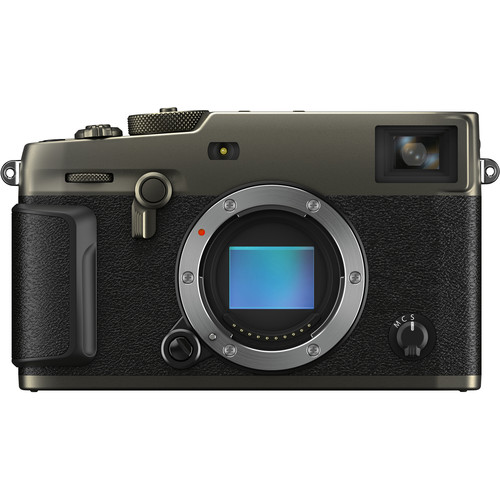
You may hear elsewhere that Fujifilm cameras have a completely different type of sensor than the other cameras in this mirrorless camera comparison. As a result, the RAW files require a different kind of deinterlacing during post-processing. This doesn’t matter to photographers who only want to shoot JPEG format as opposed to RAW. But RAW photographers are often fighting about the best way to deinterlace the files produced by this sensor. I honestly can’t see any difference; they all look fine to me. This will only matter to people who want to analyze every pixel of every photo, not photographers who just want to take photos.
You can learn more about the complete APS-C Fujifilm mirrorless camera comparisons in this post.
I switched from Sony mirrorless to Fujifilm mirrorless for reasons you can read about here. Would they apply to you?
Olympus mirrorless cameras
- SENSOR FORMATS: Micro Four-Thirds
- STRENGTHS: Small size, accurate colors, great optics in lenses
- WEAKNESSES: Small size, low-light capability, harder to get a shallow depth of field
- IDEAL JOBS: Photojournalism, casual photography
- PRICE RANGE: $350 – $2,600
- MOST POPULAR: OM-D E-M1 Mark III, OM-D E-M5 Mark III
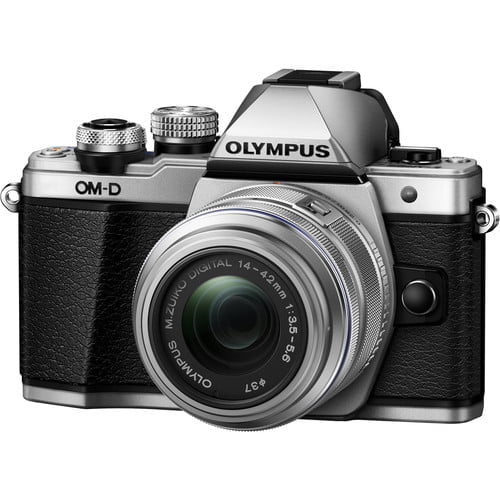
Olympus and Panasonic simultaneously developed the Micro Four-Thirds sensor system, and as a result, you have a great lineup of lenses, competitively priced, that will work for both systems. And the lenses have great optical quality, not to mention being much smaller thanks to the smaller sensor.
The Olympus mirrorless camera comparison lineup can be summarized like this:
- The OM-D E-M1 is the largest, most capable (and most expensive) camera in the lineup that will appeal to professional photographers doing photojournalism, documentary, and travel work.
- Olympus’ OM-D E-M5 is a mid-level camera that will appeal to both professionals and beginner photographers, containing many of the desirable features of the E-M1 but at a more affordable price and smaller size than the E-M1.
- The OM-D E-M10 is a more entry-level camera, lacking features like higher burst rates, two card slots, and high-res shooting, but it’s still a very capable camera for casual travel photographers.
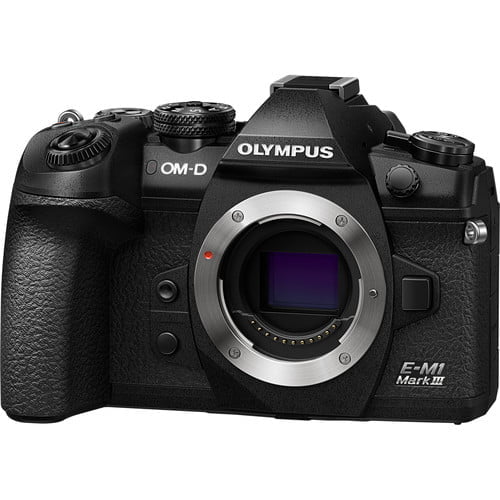
The cameras themselves are small due to the smaller sensor. This may be an advantage for photographers who are looking for a small system or a disadvantage to photographers who value ergonomics.
Many of the other disadvantages of Olympus mirrorless cameras are also due to the small sensor. Low-light performance and dynamic range are good but not as good as cameras with larger sensors. You also won’t be able to get as shallow a depth of field as you can with larger sensors. This is an advantage to landscape photographers who require a deep depth of field, but a disadvantage to portrait & documentary photographers who require a shallow depth of field.
If these kinds of things matter to you, you may want to look into a camera with a larger sensor. Otherwise, the cameras are easy to use, have great color rendition, and will last you a long time.
Panasonic mirrorless cameras
- SENSOR FORMATS: Micro Four-Thirds
- STRENGTHS: Amazing video capabilities, image stabilization, battery life
- WEAKNESSES: Low-light performance, controls not intuitive
- IDEAL JOBS: Professional video and vlogging
- PRICE RANGE: $500 – $4,000
- MOST POPULAR: Lumix DC-GH5, Lumix DC-S1H
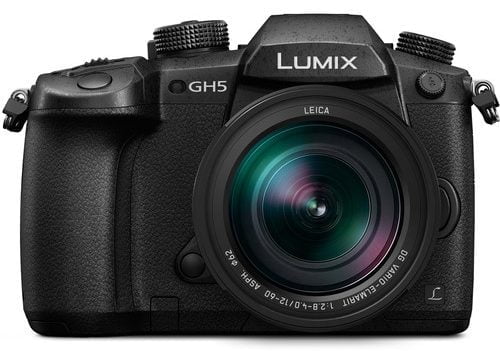
Panasonic, like Olympus, shares a heritage of Micro Four-Thirds lens development, and you’ll similarly find a great selection of lenses with amazing value. Other than that, what are the big differences in the Olympus and Panasonic mirrorless camera comparisons?
Panasonic mirrorless cameras seem to have found a niche in the video/vlogging market. They even recently made the jump into full-frame systems, boasting 6K video in the Lumix S1H, which Netflix even uses to film some of their productions. They’ve partnered with Leica for full-frame lenses, promising an excellent lens choice.
Don’t get me wrong, these cameras still take great photographs. Maybe not the best in class, but they’re not bad. But video capacities are heavily emphasized, whereas other cameras like Olympus are “photography cameras with movie capability.”
The Lumix GH5 line is Panasonic’s best-seller right now. The original GH5 has built-in image stabilization and video capabilities meant for pros. The GH5s takes the video capabilities to a whole new level, improves stills quality, but removes the stabilization. For a more entry-level Lumix, the GH7 is available at a much lower price.
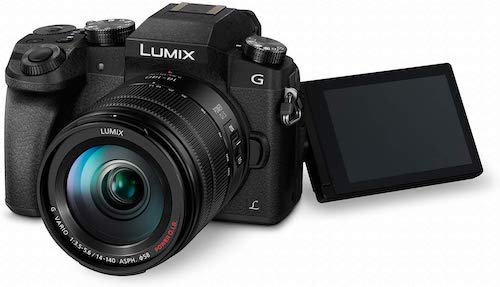
Canon mirrorless cameras
- SENSOR FORMATS: APS-C & Full Frame
- STRENGTHS: Accurate colors, build quality, maintains full EF lens capabilities with a lens adapter
- WEAKNESSES: Canon DSLR owners will find the control interface annoying, only one card slot
- IDEAL JOBS: Canon DSLR owners who want to try mirrorless cameras
- PRICE RANGE: $300 – $2,500
- MOST POPULAR: EOS R, EOS M50
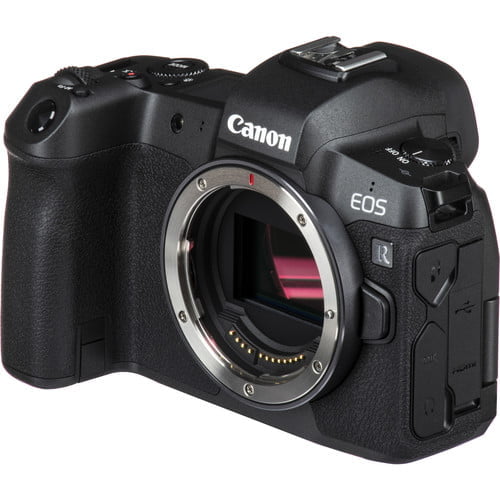
Canon, along with Nikon, is the newest member of the mirrorless camera family. They’re still learning, and although Canon mirrorless cameras can’t compare to others, the EOS R and EOS M50 are still mighty fine cameras. Both are fairly affordable, especially if you were already a Canon shooter and have the lenses, which work with an adapter.
- Canon’s EOS R is their flagship full-frame mirrorless camera, catering to the same types of photographers who were in love with the 5D series of cameras.
- The EOS M50 is a more entry-level APS-C mirrorless camera, more on-par with the Rebel line of DSLRs.
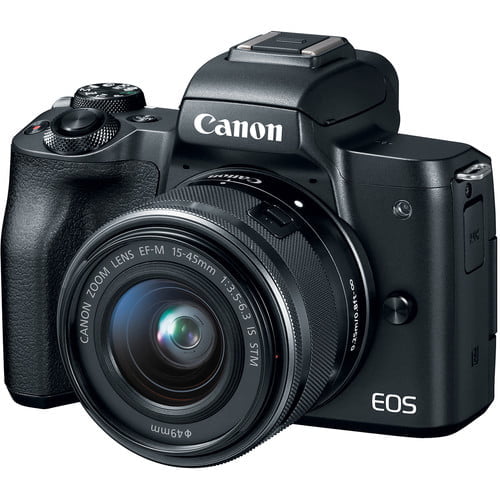
There were a few complaints about Canon’s first mirrorless camera release, some being that there’s only one memory card slot, there’s no focus point joystick, and the burst shooting capabilities are lousy. But you can bet that these will be addressed in future releases.
Canon was in a hurry to get a mirrorless camera to the market, to keep current customers loyal to Canon instead of jumping to, say, Sony for a mirrorless camera (like I did in 2015). When the EOS R was released, so was an adapter allowing current Canon DSLR users to keep their current lenses to use on the EOS R. And Canon has some great DSLR lenses.
Nikon mirrorless cameras
- SENSOR FORMATS: APS-C & Full Frame
- STRENGTHS: Easy transition for Nikon DSLR owners, good built-in image stabilization (Z6 & Z7)
- WEAKNESSES: Single card slot, battery performance
- IDEAL JOBS: Nikon DSLR owners looking to get into a mirrorless system
- PRICE RANGE: $850 – $2,800
- MOST POPULAR: Z 6, Z 50
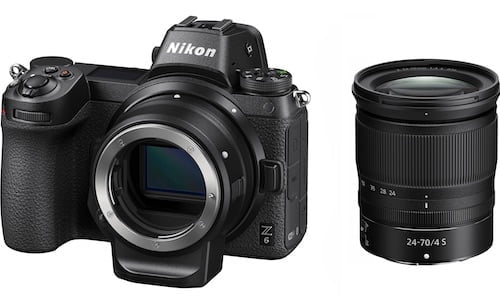
Nikon, like Canon, was losing customers who wanted to transition into a mirrorless camera system and so they rushed out their own mirrorless cameras in an effort to keep them. Here’s a summary of Nikon’s mirrorless camera comparison:
- The Nikon Z 50 is an APS-C 21MP mirrorless camera intended for enthusiast and beginner photographers. Unlike the other Nikon mirrorless cameras, it lacks built-in stabilization. Because it’s smaller and cheaper, it also lacks some of the controls and advanced features of the Z 6.
- Nikon’s Z 6 is a full-frame 24MP mirrorless camera for pros and enthusiasts. It’s a great all-purpose camera for those looking to use their existing Nikon lenses on a mirrorless system.
- The Nikon Z 7 is essentially the Z 6 but with 45MP. More megapixels give it more autofocus points, but that also makes it a slower and more expensive camera than the Z 6. Those are really the only differences you’d care about, if you even care to have an excessive 45MP.
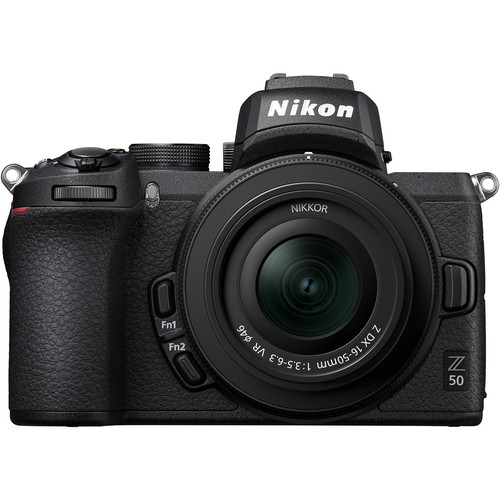
Nikon’s Z mount lenses are fairly limited right now, but they’ve published a roadmap showing a big ramp-up in the number of lenses they’ll be producing. In the meantime, you can use Nikon lenses intended for DSLRs on the Z mount with an adapter.
Current Nikon DSLR owners would be well-suited to try out the Nikon Z mirrorless cameras. Controls are similar, you can use your lenses (with adapter), and you’ll be familiar with the basic features. But if you’re new to photography and/or don’t have Nikon lenses, I’d say you’re better off waiting until this system is refined.
Leica mirrorless cameras
- SENSOR FORMATS: APS-C, Full Frame, Medium Format
- STRENGTHS: Solid build, great optics
- WEAKNESSES: High entry price, steep learning curve, mediocre video capability
- IDEAL JOBS: Documentary, travel, and street photography
- PRICE RANGE: $2,500 – $20,000
- MOST POPULAR: M10 (full frame), CL (APS-C)
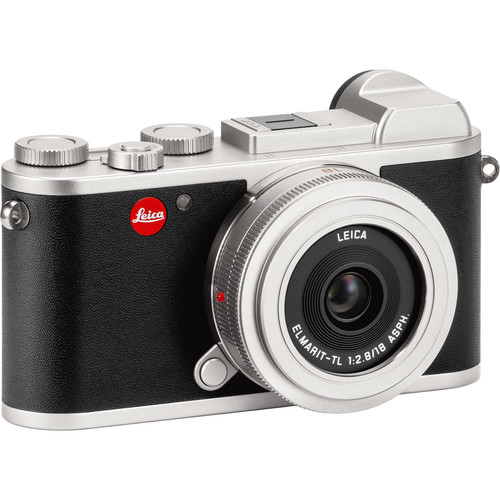
Leica is like the Louis Vuitton of cameras. Will a cheaper handbag also carry your things just as well? Yes, but it doesn’t say Louis Vuitton on it. I’m not ragging on Leica; their cameras are wonderful.
The optics and image quality are, for the most part, superior to the other cameras on this list – if you and your viewers are keen enough to notice it. And most people won’t unless it’s pointed out to them or you’re specifically looking for it.
So if you’re just getting into mirrorless cameras then I’d ask you to reconsider, putting your money elsewhere, like great lenses and travel opportunities. There’s a bit of a learning curve with these cameras and you’re paying a hefty price to get there. But if you want the status of carrying a camera with that red dot, go ahead. You really will love it once you learn to use it.
- Leica’s CL line of cameras is a rangefinder-style 24MP APS-C camera. They’re compact and great for travel and documentary photographers. The exterior controls are simple and minimalistic.
- The M10 series is a full-frame rangefinder camera in a number of different flavors. Some have a viewfinder only (no rear LCD), some have a sensor only capable of shooting black and white, and some have a color sensor with touchscreen LCD.
- For photographers not keen on the rangefinder style, the Leica SL2 is an SLR-style body with center viewfinder.
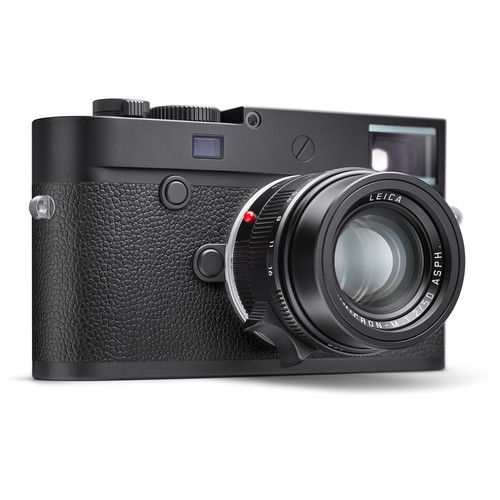
So, which mirrorless camera is best for you?
I hope this helped put mirrorless camera comparisons into perspective for you. I wanted it to be more of a “bigger picture” look rather than a strict comparison of specs like megapixel count and ISO values.
If you have any questions or comments, please don’t hesitate to leave them below!

Mark2b2
Monday 7th of December 2020
You forgot the sigma mirrorless quattro as camera...